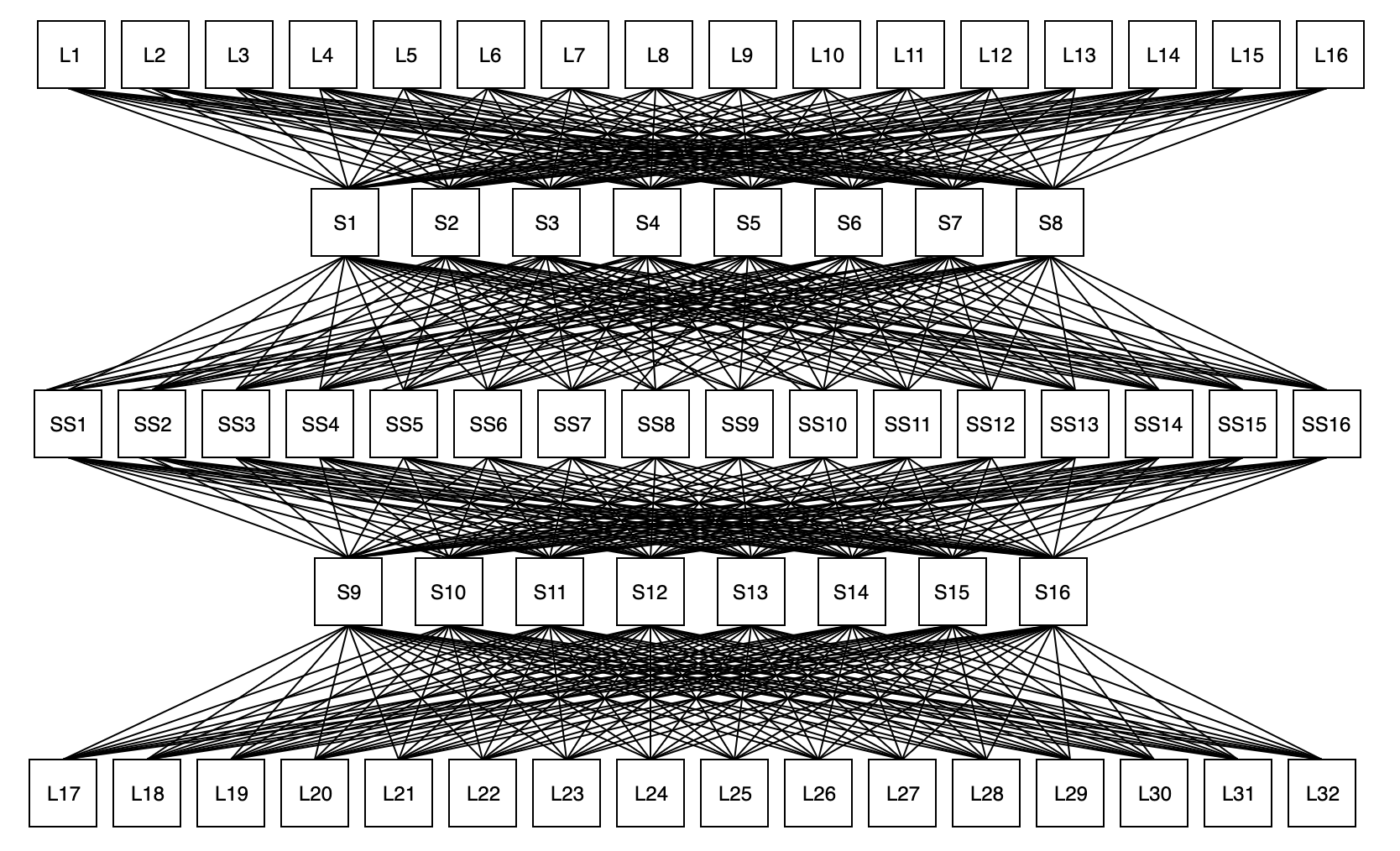Scalable Clos Layer3 Data Center Fabric
May 9, 2019
Properties
- Switches are organized into layers or stages, such as a leaf layer and a spine layer.
- Switches can be all the same model or a couple models. Switches are typically lower cost 1RU fixed-configuration switches instead of large chassis switches.
- Switches only connect to switches in other layers. For example, leaves only connect to spines and spines only connect to leaves.
- All links between switches are layer 3 links, never layer 2. Layer 2/VLANs/Spanning-tree are confined to a single switch. All links will be able to use ECMP (Equal Cost Multi-Path), and switches typically support 16 links in ECMP.
- The fabric is non-blocking. This means that any server connected to the fabric can utilize its entire link bandwidth to communicate with other endpoints anywhere in the fabric. For example, a file transfer between servers A and Z will not be throttled by a file transfer between servers B and Y due to all four servers sharing an oversubsribed link somewhere in the fabric.
- Non-blocking is achieved by every stage having the same number of links or bandwidth connecting to the other stages on either side.
- The bandwidth impact of a loss of a single switch can be minimized by increasing the number of switches in the fabric.
- Network can be scaled by adding additional stages.
Diagram

Fault tolerance
If a spine switch is lost, only 12.5% of the bandwidth of the fabric is lost. In the classic architecture with two large distribution switches, a failure results in 50% of bandwidth loss.
Scaling
The design above is technically a 3-stage clos network, but the two leaf stages are depicted as one big stage. To scale up to handle more leaves, a 5-stage clos network can be implemented:

Credits:
Petr Lapukhov’s RFC: Use of BGP for Routing in Large-Scale Data Centers
Comments